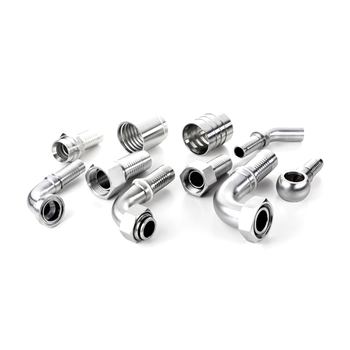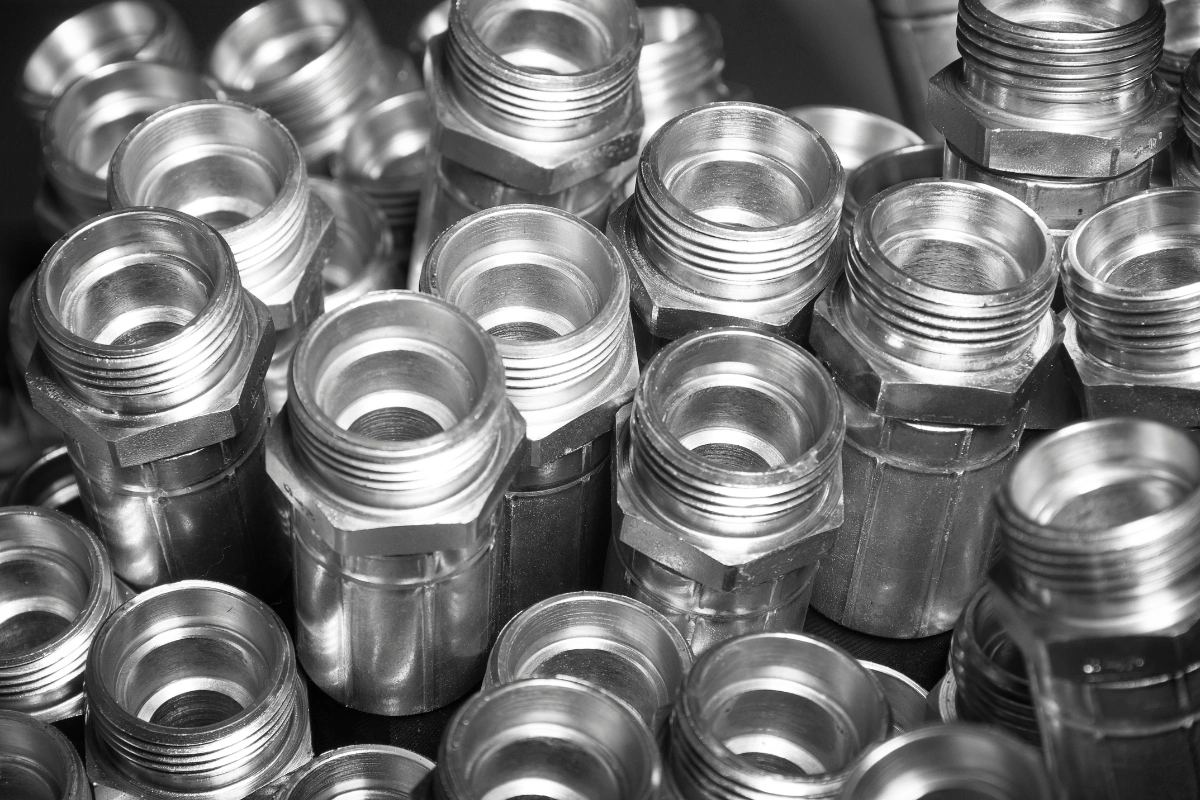Hydraulic fittings are essential components in hydraulic systems, designed to connect pipes, tubing, and other components, ensuring fluid pressure sealing and system efficiency. These fittings are used in many applications, from heavy industry to agricultural equipment and mobile hydraulic systems. But what are the various types of hydraulic fittings called? Let’s explore the different types of fittings and their specific names.

Compression fittings
Compression fittings are among the most common in hydraulic systems. These fittings create a sealed connection between pipes through a compression ring or ferrule, which is tightened around the pipe with sufficient pressure to ensure sealing.
Among compression fittings, we find:
- Olive fittings: Another name for compression fittings, derived from the shape of the compression ring that tightens around the pipe.
- Conical fittings: These fittings use conical surfaces to improve sealing and are often used in high-pressure applications.
Threaded fittings
Threaded fittings have threads that allow components to be screwed together, creating a secure and resistant connection. These fittings are mainly used in applications requiring frequent disassembly or adjustments. Here we find various types:
- BSP fittings (British Standard Pipe): These threaded fittings follow British standards and are widely used in Europe.
- NPT fittings (National Pipe Thread): A standard widely used in the United States, NPT fittings have a tapered thread that improves pressure sealing.
- Metric fittings: These are threaded fittings that follow metric system specifications, mainly used in European applications.
For more information on hydraulic fittings and their application, visit our page dedicated to Hydraulic Fittings.
Flange fittings
Flange fittings are designed for applications requiring a strong and easily detachable connection. Used in industrial plants and high-pressure systems, flange fittings have two flat surfaces that are bolted together. There are two main types:
- SAE flange fittings: Fittings that follow SAE (Society of Automotive Engineers) specifications for hydraulic applications in industrial and mobile systems.
- DIN flange fittings: These fittings follow DIN (Deutsches Institut für Normung) standards and are commonly used in European hydraulic systems.
What materials are used for hydraulic fittings?
Hydraulic fittings can be made from various materials, each with specific properties making them suitable for certain applications. Among the most common materials are:
- Steel: Used for its strength and ability to withstand high pressures, steel is widely employed in hydraulic fittings for industrial applications.
- Brass: Brass is preferred for its corrosion resistance and is often used in medium-pressure applications.
- Plastic: Plastic fittings, such as PVC, are used in low-pressure applications or where chemical resistance is essential.
The choice of the right hydraulic fitting depends on various factors, including operating pressure, the type of fluid used, and environmental conditions. It is essential to select the most suitable fitting for the specific needs of the system to ensure optimal performance and long life of the hydraulic system!

